First Computer MH47CW Notebook Computer With 802.11b Wireless LAN User Manual MH47 English manual final
First International Computer Inc Notebook Computer With 802.11b Wireless LAN MH47 English manual final
Contents
- 1. Users manual 1
- 2. Users manual 2
- 3. Users manual 3
Users manual 3
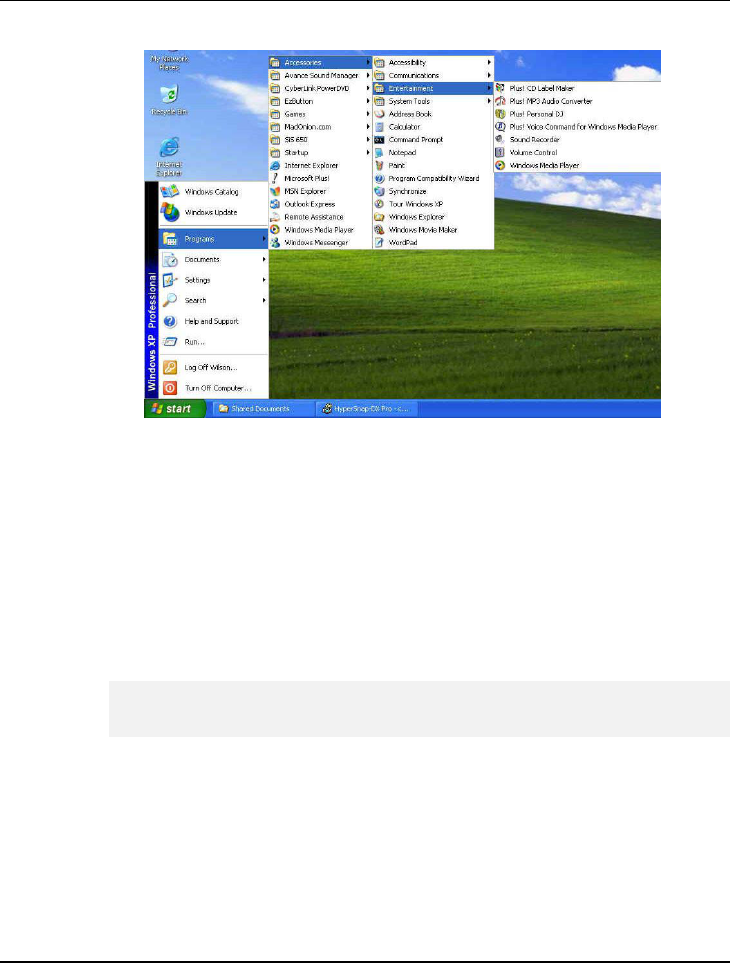
Fun with Multimedia 4
81
Figure 4-1 Entertainment Programs Group
The standard multimedia components are as follows:
• Windows Media Player - for playing sound, video and animation files
• Sound Recorder - for recording sounds and playback
• Volume Control - for adjusting the volume of mixer
☞
For more information on how to operate these multimedia components, run
the program and click on the Help menu.
4.5 Recording Sounds
Your computer allows you to record voice and other sounds in several ways
and stores them as files on your hard disk. These voice or sound files can then
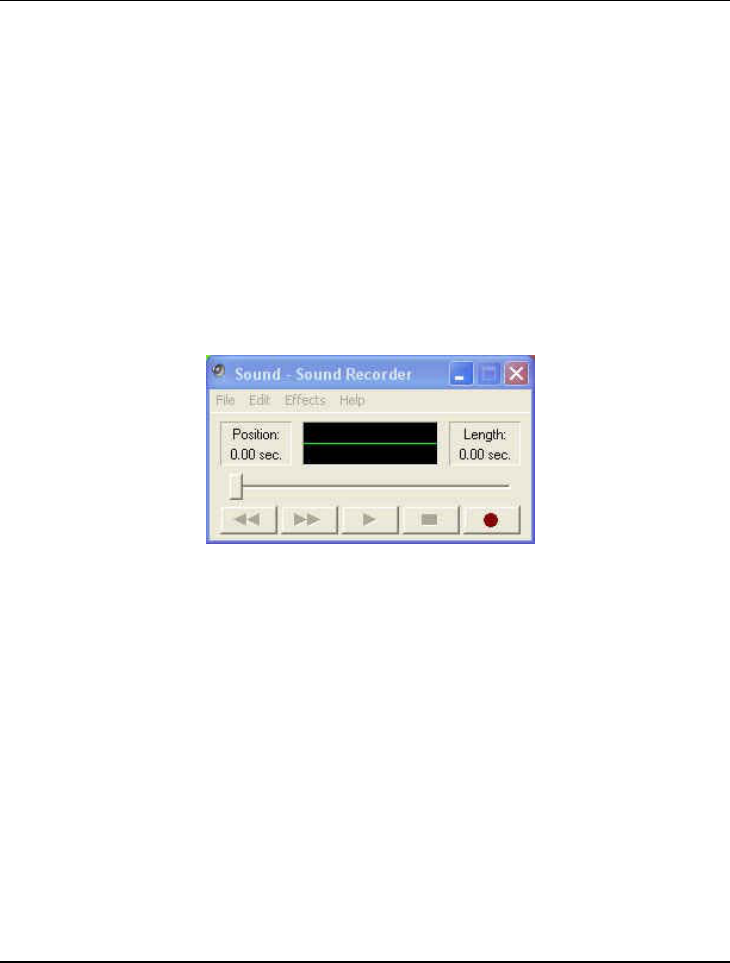
Notebook User Guide
82
be played back through the internal speakers or earphone jack using an external
speakers, headphone, or earphone set. You can also use the files as voice
annotations on many applications for more real presentation. This section will
describe briefly how you can record sounds under Windows operating system.
To record sounds, you need to run the Sound Recorder program from the
Multimedia program groups. The control buttons of the Sound Recorder are
simple to understand which comprise of the Fast Rewind, Fast Forward, Play,
Stop, and Record buttons. Click the Help menu on how to operate the Sound
Recorder.
Figure 4-2 Sound Recorder
The Sound Recorder also allows you to record sound from different input
audio source like the following:
• From the external microphone
• From Line-in audio
• From the optical disk drive
Since you could record sound from different input sources, you must first set
the proper audio input recording device under the Recording Control panel. To
do this:
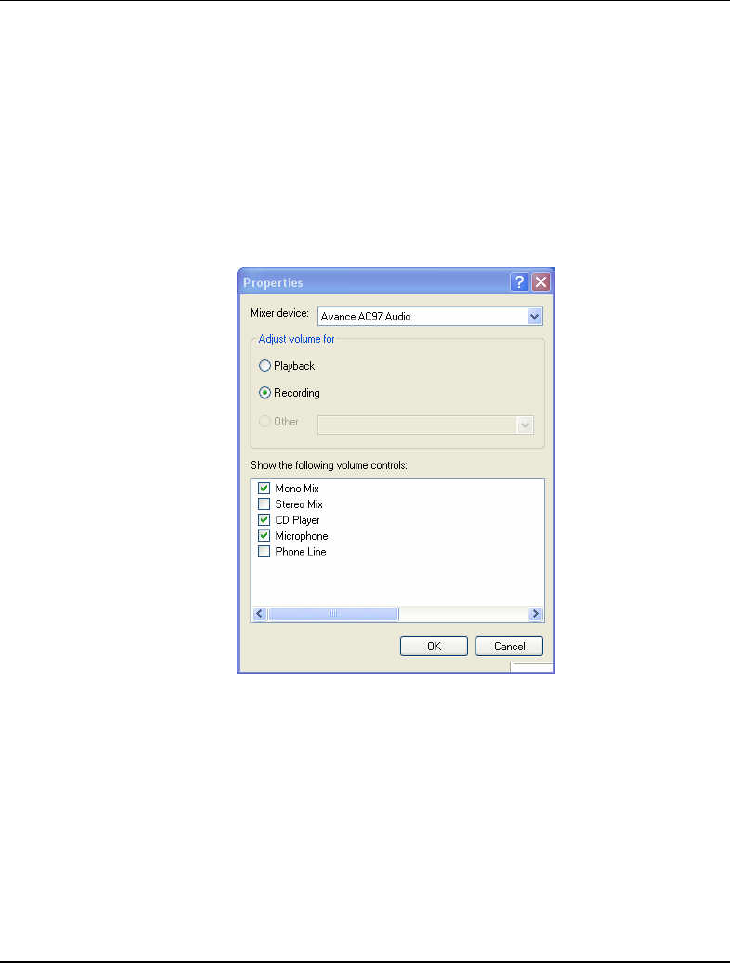
Fun with Multimedia 4
83
1. Double-click on the Volume Control on the taskbar or click Start button,
then point to Programs, Accessories, Entertainment and then click on
Volume Control.
2. Click Properties in the Options main menu.
3. Click the round button for Recording and tick off each component that list
in the "Shows the following Volume Controls" box.
Figure 4-3 Audio Properties
4. Click OK and the Recording Control dialog box will appear. Here, you will
select the input device for the recording source. If you want to record
from the optical disk drive with audio music, you must click on CD Player.
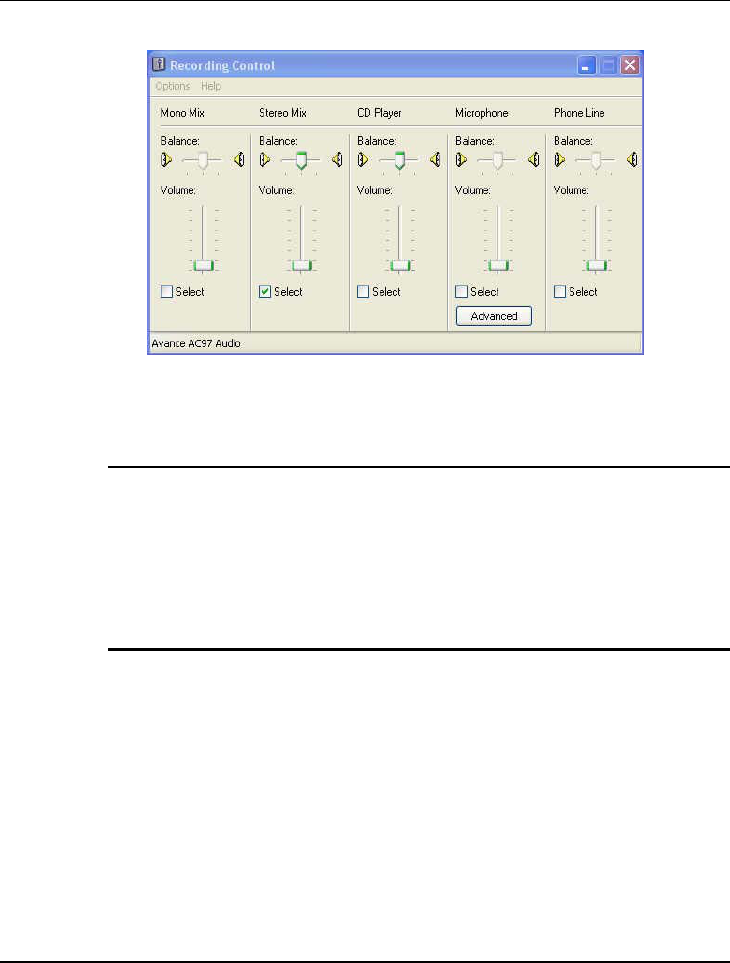
Notebook User Guide
84
Figure 4-4 Recording Volume Control
USING AN EXTERNAL MICROPHONE
Your computer allows you to connect an external microphone for high quality
recording. The external microphone jack is found on the left side of your
computer. Use only microphone with 1/8-inch mini-jack connector. Follow the
same procedure for recording voice.
USING THE BUILT-IN OPTICAL DISK DRIVE
You would normally use the optical disk drive for recording audio music from
the Audio CD. Follow these steps:
1. Activate CD Player volume on the Recording Control as discussed earlier.
2. Run the Sound Recorder program.
3. Insert the audio CD into the optical disk drive. Unless you have disabled
the CD auto-insertion notification for supporting Suspend mode, the CD
Player should automatically run after you have inserted an audio compact
disc and will start playing the audio CD.
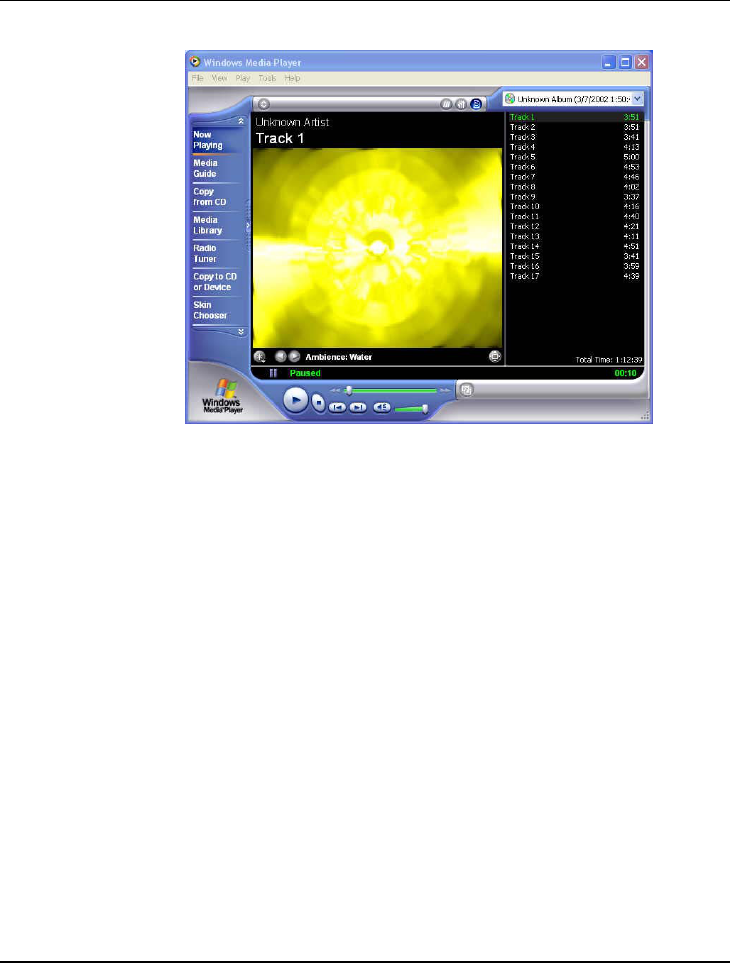
Fun with Multimedia 4
85
Figure 4-5 Play Audio CD by Windows Media Player
5. Select the starting point where you want to start recording.
6. Switch to the Sound Recorder and press the Record button.
7. Switch immediately to the Windows Media Player and press the Play
button. You can adjust the volume control so you can also hear the music
while in recording.
4.6 Playing Audio and Sound
Your computer has built-in two speakers to playback audio and sound. You can
also adjust the volume manually by adjusting the thumb-wheel volume control
found on the left side of your computer.

Notebook User Guide
86
For more quality sound output, you can choose to connect an external
amplified speakers or earphone from headphone jack. Always minimize the
volume first before placing the phone set to your ear.
USING THE WINDOWS MEDIA PLAYER
The easiest way to playback multimedia media files is to run the Windows
Media Player. Follow these steps:
1. Click on Start, point to Programs, Accessories, and then
Entertainment.
2. Click on Windows Media Player to start program.
3. Click on the File menu and select the file you want to play.
4. When the file is recognized and open, click on the Play button to start
playback.
4.7 Playing Video and MPEG Files
Your computer is capable of running video motion files as well as MPEG
(Motion Picture Expert Group) files on CD, DVD, or CD-RW. By using
software MPEG program, you can watch real full-motion picture on your
computer. You can also run the Windows Media Player under the
Entertainment programs group as well to show all media device programs.
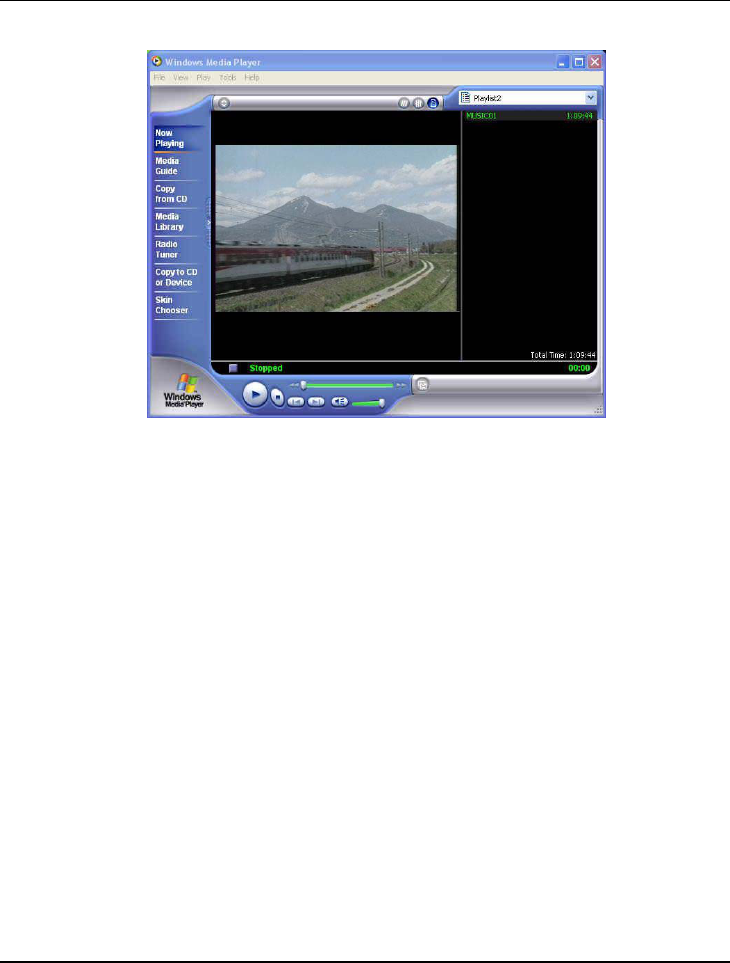
Fun with Multimedia 4
87
Figure 4-6 Windows Media Player
4.8 Using DVD
DVD is the breakthrough in superb full-motion picture playback. One disc can
contain at least 4.7GB of information, capable of holding one full-length movie
with soundtracks, subtitles, and different languages. Much more, the DVD-
ROM drive of your computer is backward compatible with CD-ROM drive so
it allows you to use any CD as well. It also works the same as the CD-ROM.
To playback DVD titles, you would need a software MPEG-2 program and the
optional DVD/CD-RW combo or DVD+RW Device Pack.

Notebook User Guide
88
☞
For best DVD playback, please enable the DMA function of this notebook,
for how to enable the DMA channel on both optical disk drive and Hard
Disk, please refer to driver installation on section 6 of chapter 2. Moreover,
you can enable Hardware Accelerator if the software MPEG-2 player you
are using has supported this function.
4.9 Using rewritable optical disk drive
CD-RW/DVD combo or DVD+RW combo drive is a device that can write
digital data to CD-R and CD-RW or DVD+R and DVD+RW media. With this
device, you can backup your own data to CD-R or CD-RW disc for mass data
storage and safely retaining. The CD-R disc can be written several times until
the CD-R is full; the CD-RW disc, furthermore, can write and erase data
repeatedly. Please refer to the related user manual about the CD-RW software.
☞
Please pay attention to the copyright of the software or data you want to
backup. Backup or distribute the software or data might be illegal according
the restriction of the law.
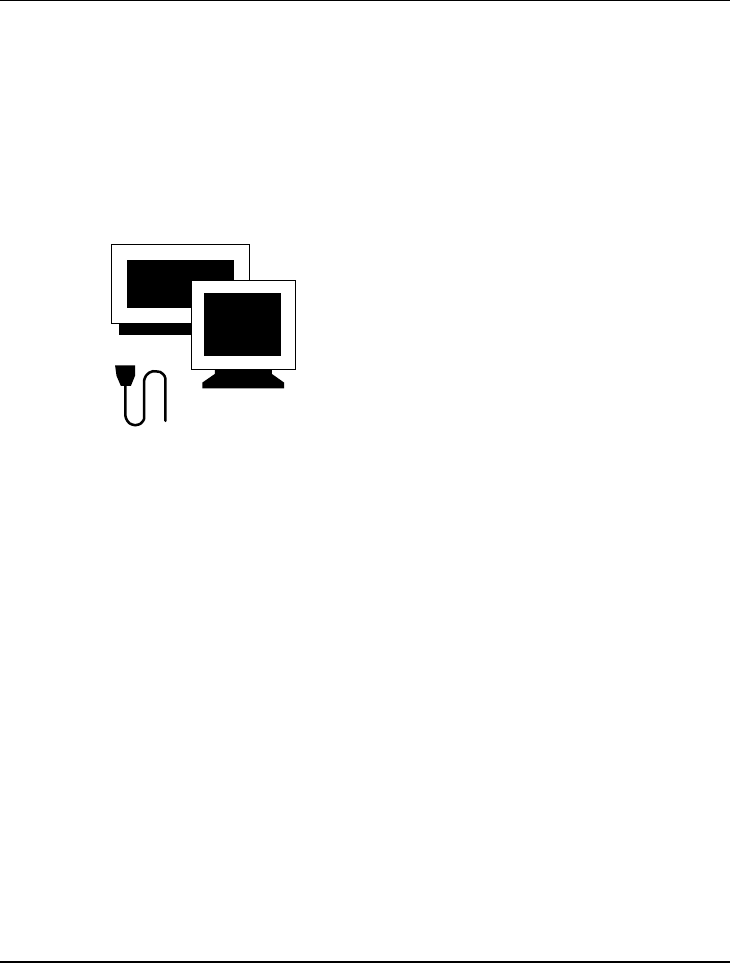
Connecting to Peripherals 5
89
5 Connecting to Peripherals
This chapter describes how you attach peripheral
devices to your notebook. You can attach a printer
or mouse; connect an external monitor and
keyboard, or any other peripheral device. You will
learn how to use these peripheral devices with the
step-by-step instructions depicted in this chapter.
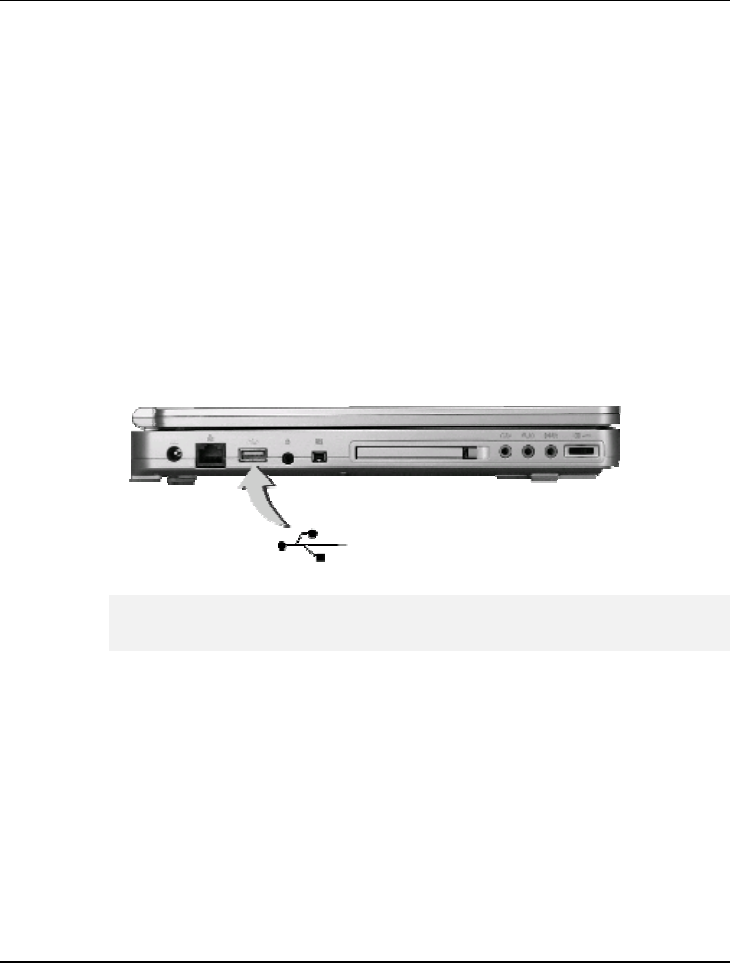
Notebook User Guide
90
5.1 Using the USB Port
USB or Universal Serial Port is a peripheral bus standard developed by
Compaq, DEC, IBM, Intel, Microsoft, NEC and Northern Telecom. Personal
computers equipped with USB will allow computer peripherals to automatically
configure as soon as they are physically attached - without the need to reboot
or run setup. USB will also allow multiple devices to run simultaneously on a
computer, with peripherals such as floppy drive, mouse, digital cameras,
scanners, printers, optical disk drive, modems, keyboards, games devices and
acting as additional plug-in sites, or hubs.
☞
Depending on your operational requirements, you may need to disable other
ports in order to release system resource for the USB port.
5.2 Using an External Keyboard (PS/2)
At the rear side of your computer, you will find the 6-pin mini-DIN PS/2
keyboard and mouse port. This port allows you to connect an external full-
sized PS/2 desktop keyboard as well as an external PS/2 mouse. If you want to
use both the external PS/2 mouse and keyboard, you would need to buy a
PS/2 Y-cable.
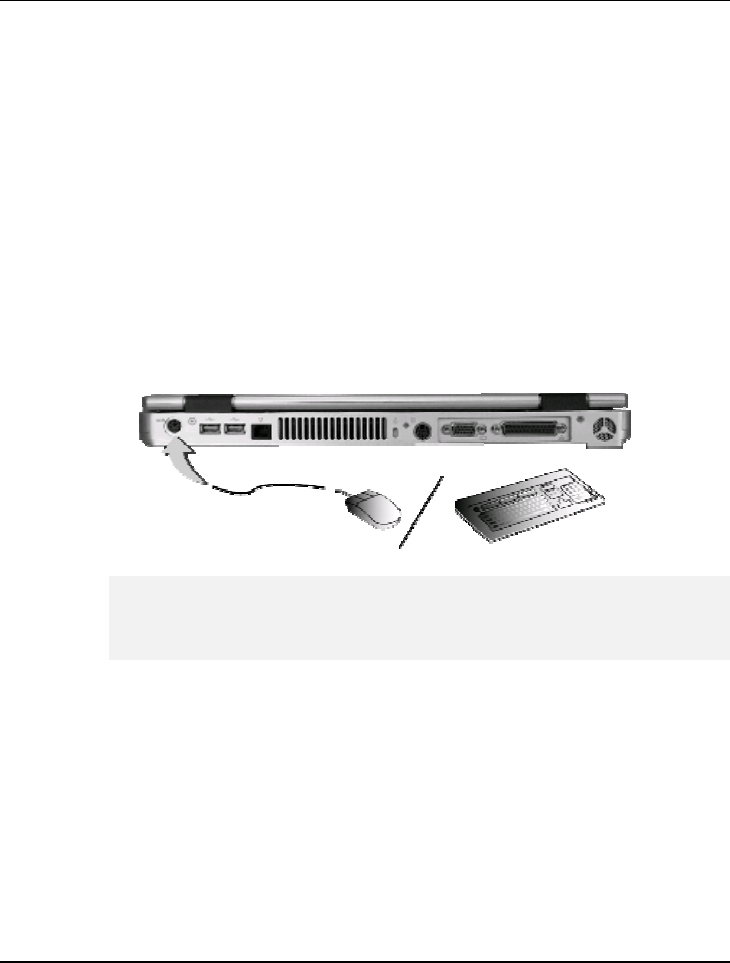
Connecting to Peripherals 5
91
For advanced system like Windows XP, the system can detect and install
suitable driver for the PS/2 mouse automatically when you plug the mouse
connector to the computer. If the system you are using does not support this
function, please install the driver as follows
1. Turn off your computer.
2. Connect the PS/2 keyboard directly to the PS/2 port. If you are using 5-
pin DIN-type keyboard, plug the keyboard to the keyboard adapter first
and then to the PS/2 port. Windows keyboard are also supported.
3. Turn on your computer. Both the built-in keyboard and the external
keyboard are active and can be used simultaneously.
☞
Do not disconnect or connect the external keyboard when power is on. Turn
off the computer first. You can connect an external keyboard or keypad only
while the system is in Suspend mode.
5.3 Using an External Monitor Port
Your computer has a 15-pin Monitor port for supporting any external CRT or
LCD color monitor. You need a display signal cable (usually provided with the
monitor). One end of the cable must have a 15-pin connector for the system.
To connect an external monitor:
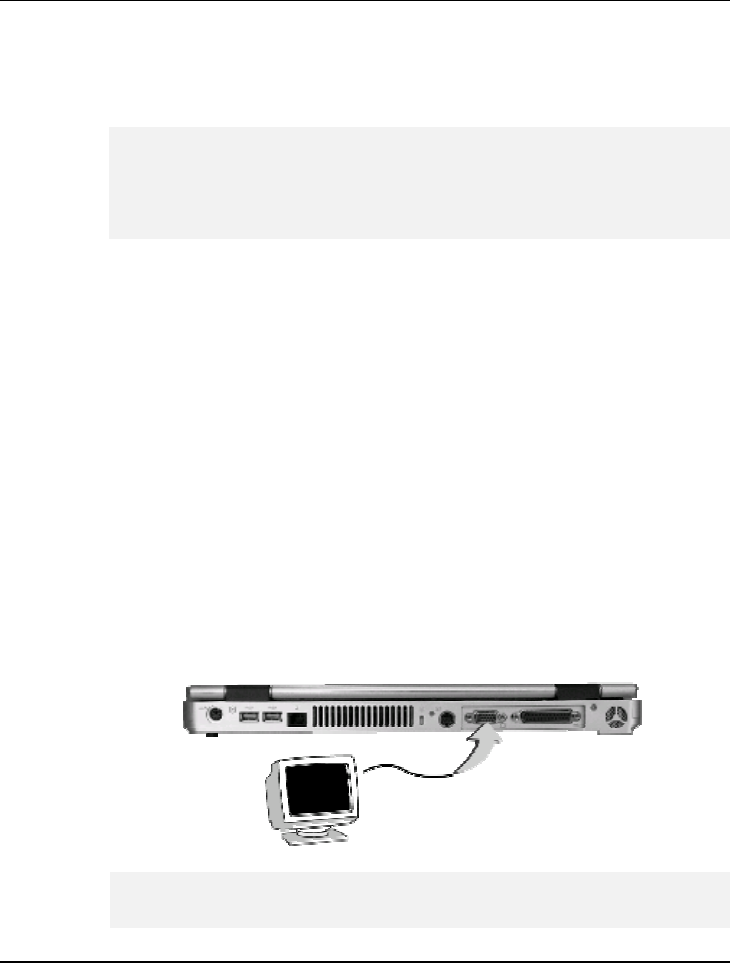
Notebook User Guide
92
1. Turn off your computer and make sure the monitor power switch is
turned off.
☞
The notebook computer must be powered off or suspended while the
monitor is being connected. Although you can connect the external Monitor
without power off the computer and the external monitor, however, it is
harmful to both devices and it shortens the life of these devices.
2. Connect the connector cable of the monitor to the VGA port at the back
of your computer. Secure the cable connection with the screws provided.
3. Connect the monitor power cable and plug it into a properly grounded
wall outlet.
4. Turn the power of the monitor.
5. Turn on your computer. Both the LCD panel and the monitor screen will
show the display. Your computer is set at default to run at simultaneous
display mode.
6. If you only want to show the display on the external monitor (CRT/LCD)
and shut off the LCD display, you can use the <Fn> + <F3> hot-key to
switch display type between LCD and CRT. Keep pressing the hot-key
until you get the display to external CRT/LCD only.
☞
Refer to Chapter 3 regarding the possible External CRT resolutions and
how to change the display properties.
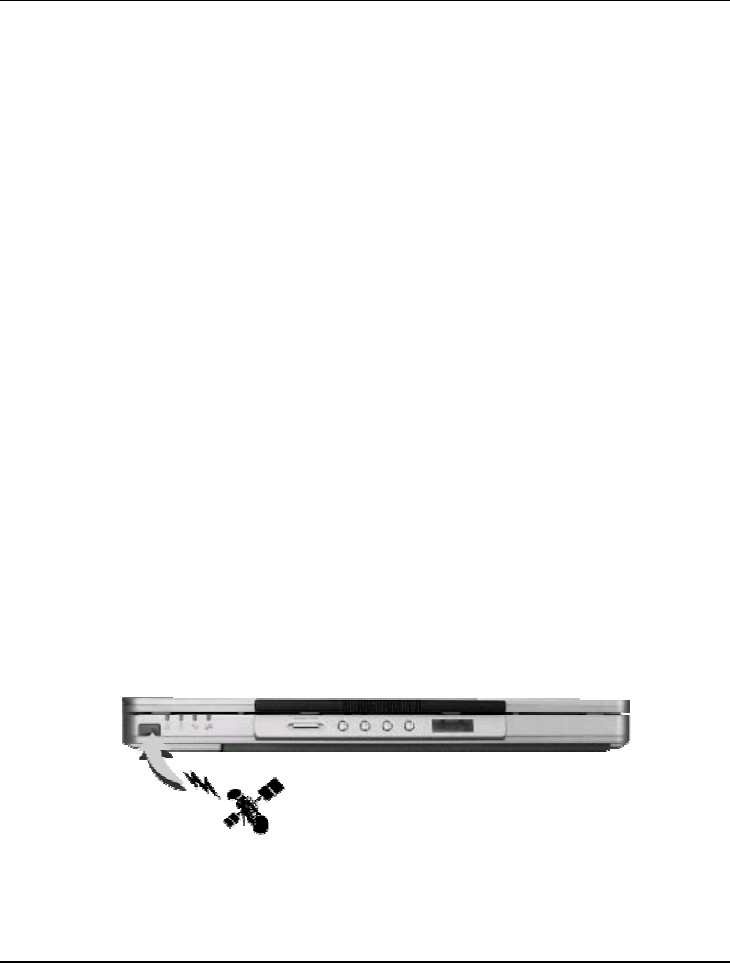
Connecting to Peripherals 5
93
5.4 Using the IR Port
Your computer can equip with an industry standard IR port that allows
enhanced wireless connection with infrared built-in devices like PDAs, printers,
and portable computers. The IR port is Infrared Data Association (IrDA)
compatible that makes use of the second COM port or COM2 of your
computer. The transfer rate for SIR is 115.2Kbit/sec. The transfer rate for FIR
is 4Mbit/sec.
To connect to another IR equipped device:
1. Properly position both your computer and the target device. Place the
target device in line with your notebook and should be within 80cm (30-
inches) from each other. You should refer to the User Guide of the target
device on how to enable its IR function.
2. Turn on your computer.
3. After setting up both devices to enable IR function, run the external
device's application that you wanted to connect to the IR port.
4. Set the transmission protocol or device to COM2 or specified by Windows
system. Make sure that this does not conflict with any pre-installed
fax/modem PC.
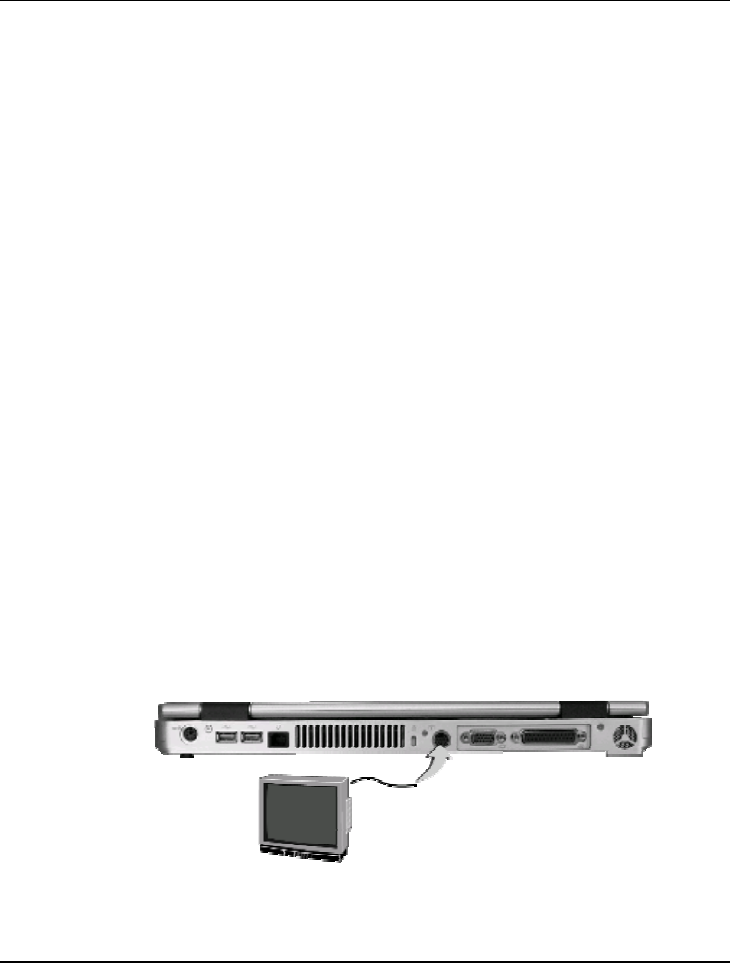
Notebook User Guide
94
5.5 Using the TV Port
You can setup the detail by operating the computer as follows.
Also found at the back of your computer is one S-Video port.
To display your computer screen on the TV, please connect the TV port of this
notebook to the Video Input of the TV set. You can press <Fn> + <F3> key
continually to switch between TFT, external monitor, TFT+external monitor
(display simultaneously), and TV only. Keep pressing the hot-key until you get
the display to external TV only.
1. Turn off your computer and plug one end of the S-Video jack cable to the
end to the input video jack of your television set.
2. Turn on your computer and your television set.
3. Click the Start button, then point to Settings, and click Control Panel.
4. Double-click on the Display icon and point to Setting tab.
5. Click Advanced button and point to Displays tab. You can see the TV
icon on the screen.
6. Please click the red button above the TV icon. Click OK, Windows now
automatically detect the TV port and enable this function.
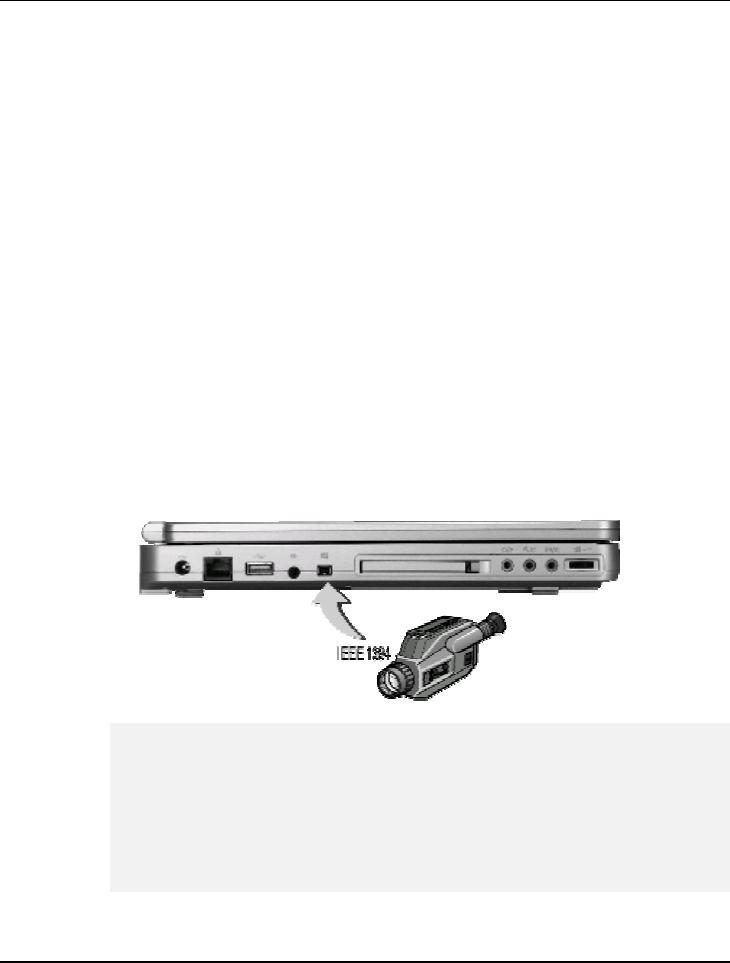
Connecting to Peripherals 5
95
5.6 Using the IEEE 1394 Port
IEEE 1394 is a new I/O standard that is supported by Win98 (second edition)
or later Windows version. With supporting high-speed transmission and
delivering data at a guaranteed rate, you can record digital video clips and
download them directly via a super-speed IEEE 1394 port at the left side of
the notebook. IEEE 1394 becomes an ideal for devices that need to transfer
high speed data in real-time.
With built-in IEEE 1394 port, this computer enables the peripheral devices in
transmitting digital video data or data backup. The Windows system will
automatically recognize it in installing a suitable driver for it.
Moreover, you should install the driver of peripheral device to connect with the
IEEE 1394 port, for details please refer to the manual that comes with your
peripheral device.
☞
Please make sure that the external IEEE 1394 HDD box you purchase on
local electronic store should provide external power adapter. There are
different types of IEEE1394 HDD box and hard disk from different
manufactures, the power consumption has varied range. If the power of the
external IEEE 1394 HDD is supplied from the USB of this notebook, it may
not run properly.

Notebook User Guide
96
5.7 Using the External Audio System
At the left side of your computer, you will find the built-in audio ports. You
can connect SPDIF port, audio line-in jack, Microphone jacks, earphone or
powered speakers.
To connect to a audio jack:
1. Locate the audio port (SPDIF, Line-in, Microphone, Headphone) that you
want to use to the target device.
2. Plug the jack into the port on the left side of the system.
☞
If you use external speakers and experience the sound distortion or
feedback, please lower the volume. Some factors is caused by too close
locating the microphone and speakers from each other, moving away the
external audio option from the unit may also help.
5.8 Using the LAN Port
This notebook comes with a internal 10Base-T/100Base-TX LAN module that
connects your computer to other computers/networks through a local area
network (LAN) and supports data transfer rates at 10Mbps and can be up to
100Mbps. The 10Base-T standard also called Twisted Pair Ethernet is
connected with RJ-45 connectors. The 100Base-TX is based on the older
Ethernet standard. Because it is 10 times faster than Ethernet, it is often
referred to as Fast Ethernet.
To connect the twisted-pair cable to your LAN port:
1. Locate the twisted-pair cable in the accessories box in notebook shipping
carton. Each end of the cable has a RJ-45 connector.
2. Connect one end of the cable into the network wall outlet or HUB.
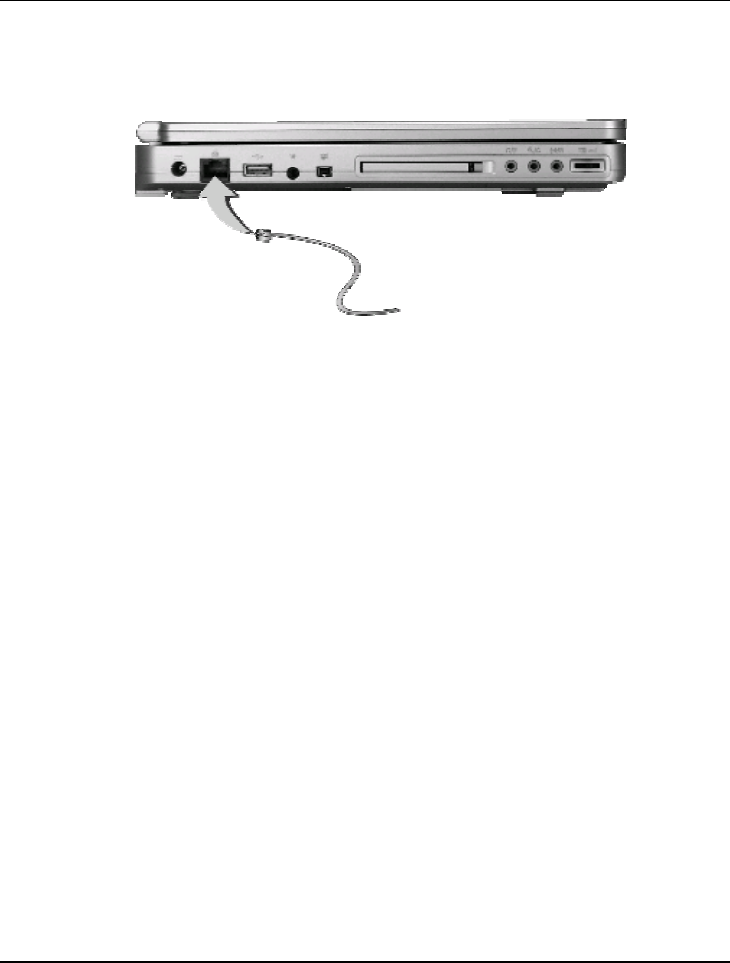
Connecting to Peripherals 5
97
3. Connect the other end of the cable into the computer RJ-45 LAN port.
5.9 Using the Wireless LAN (BTO)
Wireless LAN is the major breakthrough in computer communication
technology. It lets user connect to the LAN environment without using any
wire to traditional RJ-45 jack. User can enjoy the wireless connection within the
range of Access Point (AP) of LAN.
Access Point (AP) is the wireless transmission and receiving device, it generally
connects to the server of a LAN environment or act as a LAN hub with
wireless connection. Access point can be set in an office environment, airport,
major railway station, fast food shop...etc. that depends on the construction of
each country. In most case, you probably can use it at office, please consult
with the network department of your company for more details.
This computer integrates built-in mini-PCI 802.11b wireless LAN module.
IEEE 802.11b standard supports 11 Mbps wireless connection speed. You can
connect to the wireless LAN Access Point without insert extra wireless LAN
card into the PCMCIA slot.
Wireless LAN module is similar to LAN module. You need to install software
driver before using it. Please refer to chapter 2.6 on how to install the driver.
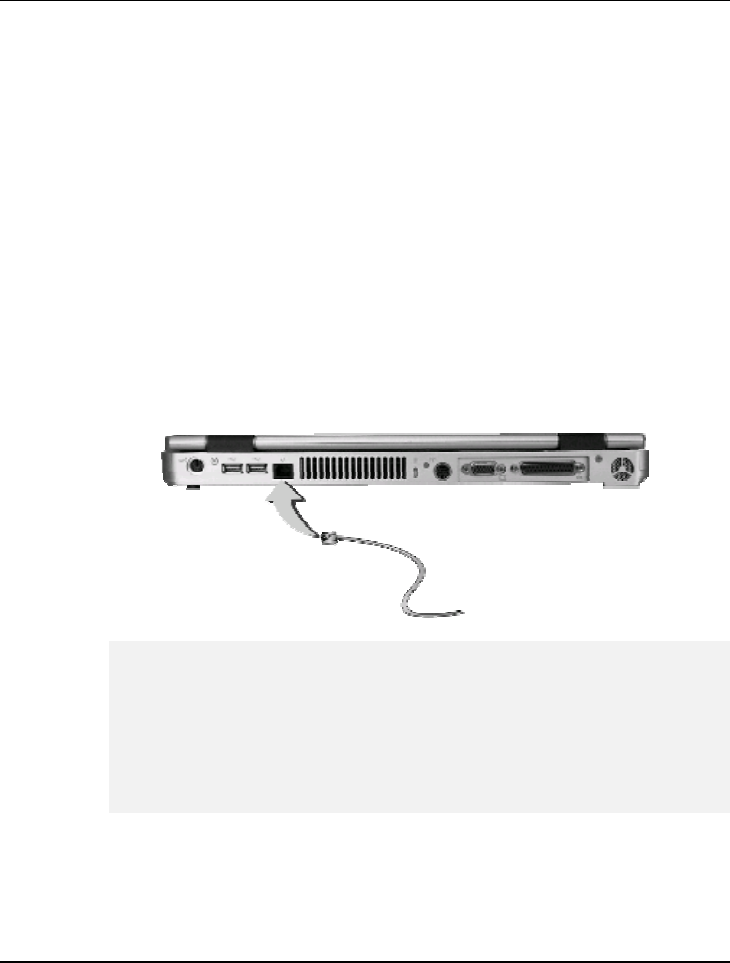
Notebook User Guide
98
5.10 Using the Modem Port
This notebook comes equipped with a 56K internal fax/data modem that
allows you to communicate with others via fax, email, or to connect to an
online service or bulletin board.
To connect the analog phone cable to your modem:
1. Locate the analog phone cable in the accessories box in notebook shipping
carton. Each end of the cable has a RJ-11 connector.
2. Connect one end of the cable into a standard wall outlet.
3. Connect the other end of the cable into the computer modem port.
☞
The speed of data transmission is dependent on the quality of telephone
lines. Digitally terminated lines improve the speed of data transmission.
Contact your Internet service provider for more information.
☞
The analog phone cable is an industry standard cable. Longer cables are
available at your local electronics store.
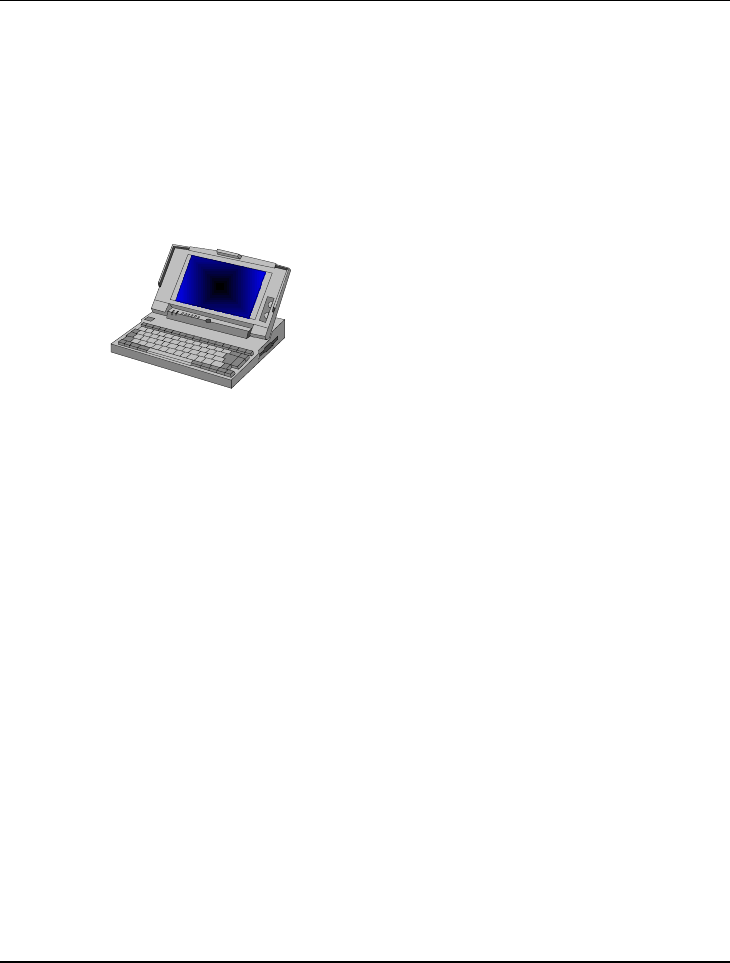
Customizing Your Notebook 6
99
6 Customizing Your Notebook
Your computer uses the Phoenix BIOS Setup
program that allows you to set several system
configuration in changing the way your computer
performs. This includes your system time and date,
disk drive configuration and password setup. This
information is then stored in the CMOS RAM and
will remain permanent unless you change it again.
This chapter discusses on how you will activate the
BIOS Setup program and change the system
configuration to suit your desired operation. You
must be careful to set the configuration properly in
order for your computer to run smoothly. If you are
not sure of any settings, contact your dealer.

Notebook User Guide
100
6.1 Running the BIOS Setup Program
Your computer is likely to have been properly setup and configured by your
dealer prior to delivery. However, you may find it is necessary to use the
computer’s BIOS (Basic Input-Output System) Setup program to change
system configuration information, such as the current date and time, or your
hard disk drive type. The Setup program can be accessed when you power on
the system and pressing the <F2> function key.
The settings that you specify within the Setup program are recorded in a special
area memory called the CMOS RAM. This memory is backed up by a battery
so that is will not be erased when you turn off or reset the system. Whenever
you turn on the computer, the system will read the settings stored in the CMOS
RAM and compare them to the equipment check conducted during the Power
On Self Test (POST). If an error occurs, an error message will be displayed on
the screen, and you will then be prompted to run the Setup Program.
As the POST (Power-On Self Test) executes during the boot up process, the
screen will display the following message:
Press <F2> to Enter SETUP
Press the <F2> key to run the BIOS Setup program. The BIOS Setup program
is organized into five menus which you can select using the <-- and --> keys.
To move from one option to another, you use the up and down arrow keys
while using the <F5> and <F6>, or <+>and <-> keys to change the settings.
On the right hand side of the screen are some brief help descriptions of each
item you want to change.
On the BIOS Setup program, you will find the following parts on the screen:

Customizing Your Notebook 6
101
• Item Specific Help
The right side of the screen. This area describes each parameter and its
available settings.
• Menu Bar
The top line of the screen. Each of the five selections displays its own
screen.
• Parameters
The left side of the screen. This area lists the parameters and their current
settings.
• Key Status Bar
The bottom part of the screen. These lines display the keys available to
move the cursor, select a particular function and so forth.
To exit the BIOS Setup program, simply press the <Esc> key and select from
the Exit menu whether you want to Save changes and exit; Discard Changes
and exit.
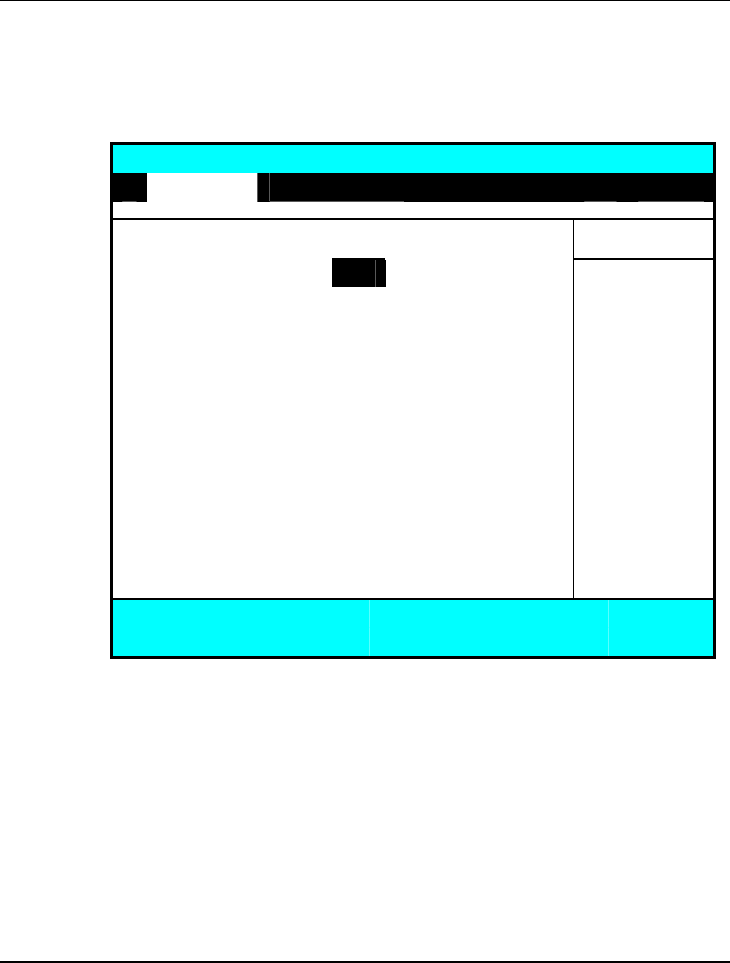
Notebook User Guide
102
6.2 Using the Main Menu Setup
Phoenix BIOS Setup Utility
Main Advanced Security Boot Exit
Item Specific
S
y
stem Time:
[
12 :00 :00
]
<Tab>
,
<Shift-
System Date: [03/03/2003] or <Enter> selects
field.
4 Primary Master [IC25N040ATCS04-0 - (PM)]
Secondary Master Installed CD/DVD
System Memory: 640 KB
Extended Memory: 523264 KB
CPU Type: Mobile AMD Athlon(tm) XP-M
CPU Speed: 1900+
BIOS Version: 0.3A-44A5-0812
F1 Help Ç ÈSelect Item -/+ Change Values F9 Setup Defaults
Esc Exit Å--> Select Menu Enter Select Sub-Menu F10 Save and Exit
• System Time
Allows you to change the system time using the hour:minute:second
format of the computer.
Enter the current time for reach field and use the <Tab>,
<Shift>+<Tab>, or <Enter> key to move from one field or back to
another.
You can also change the system time from your operating system.

Customizing Your Notebook 6
103
• System Date
Allows you to set the system date using the month/date/year format.
Enter the current time for reach field and use the <Tab>,
<Shift>+<Tab>, or <Enter> key to move from one field or back to
another.
You can also change the system time from your operating system.
• Primary Master
This field display various parameters for the hard disk drive. If type [Auto]
is selected, the system automatically sets these parameters. If type [User] is
selected, Cylinders, Heads and Sectors can be edited.
• Secondary Master
This field is for information only as the BIOS automatically detects the
optical disk drive.
• System Memory
This field reports the amount of base (or conventional) memory found by
the BIOS during Power-On Self-Test (POST).
• Extended Memory
This field reports the amount of extended memory found by the BIOS
during Power-On Self-Test (POST).
• CPU Type
This field reports the CPU type information detected by the BIOS during
Power-On Self-Test (POST).
• CPU Speed
This field reports the CPU speed information detected by the BIOS during
Power-On Self-Test (POST).
• BIOS Version
This field is for information only as the BIOS displays the BIOS version
during the Power-On Self-Test (POST).
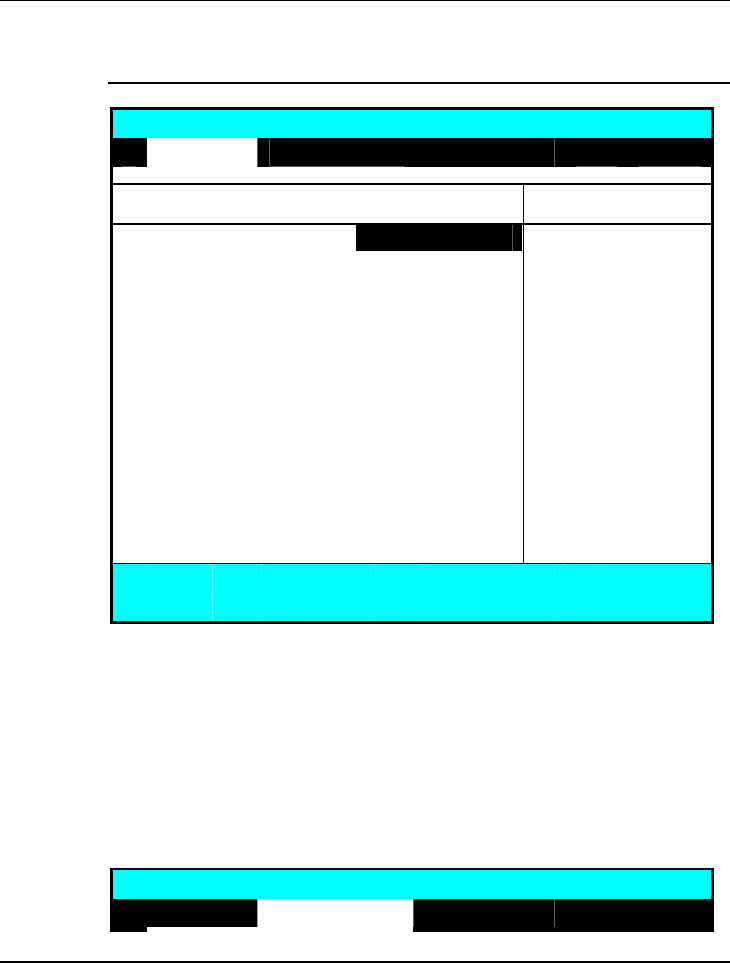
Notebook User Guide
104
6.2.1 INTERNAL HDD SUB-MENU
Phoenix BIOS Setup Utility
Main Advanced Security Boot Exit
Primary Master [IC25N040ATCS04-0 - (PM)] Item Specific Help
T
yp
e:
[
Auto
]
User =
y
ou enter
LBA Format parameters of hard-disk
Total Sectors: 117210240 drive installed at this
Maximum 60012MB connection.
Auto = autotypes hard-
Multi-Sector Transfers: [16 Sectors] disk drive installed here.
LBA Mode Control: [Enabled] CD-ROM = a CD-ROM
32 Bit I/O: [Disabled] drive is installed here.
Transfer Mode: [FPIO 4 / DMA 2] ATAPI Removable =
Ultra DMA Mode: [Mode 5] Removable disk drive is
Installed here.
F1 Help Ç ÈSelect Item -/+ Change Values F9 Setup Defaults
Esc Exit Å--> Select Menu Enter Select Sub-Menu F10 Save and Exit
Use the Type field to select the drive type installed. You can select different
drive types as CD-ROM, User, Auto or None by pressing <Space> bar. Set
this option to Auto so your computer will automatically detect the drive type
during power on. Set this option to None when your computer is not installed
any devices. Press <Esc> to return to the Main Menu.
6.3 Using the Advanced CMOS Setup
Phoenix BIOS Setup Utility
Main Advanced Security Boot Exit
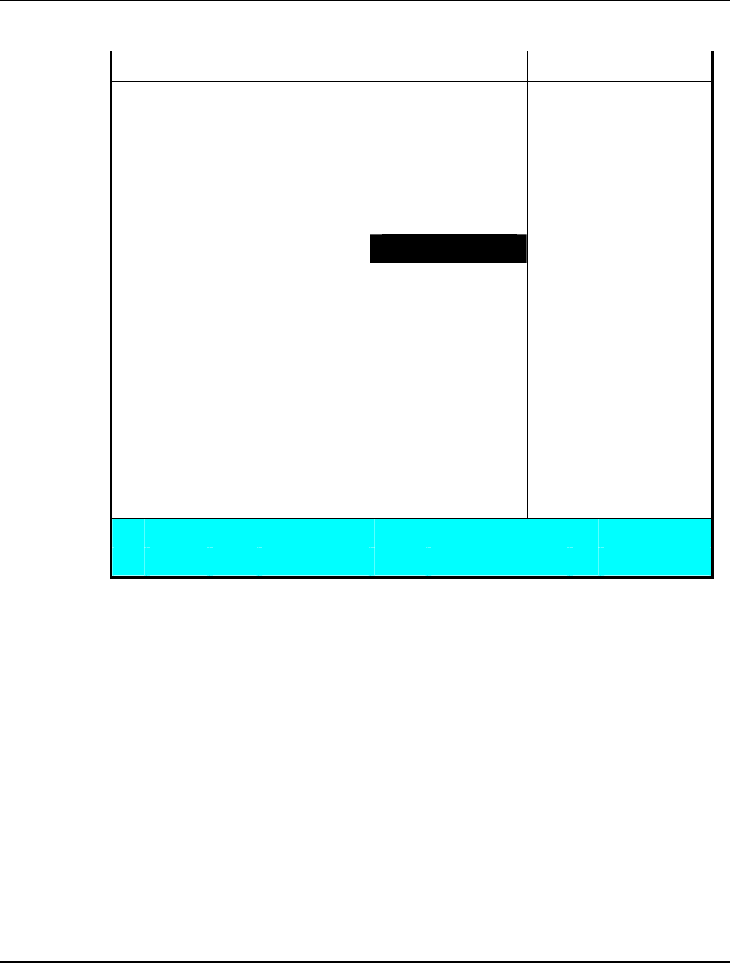
Customizing Your Notebook 6
105
Item Specific Help
Setup Warning
Setting items on this menu to incorrect Enable the integrated
values may cause your system to malfunction. Local bus IDE adapter
Large Disk Access Mode [DOS]
Local Bus IDE adapter [Both]
4 Advanced Chipset Control
4 I/O Device Configuration
USB BIOS Legacy Support: [Enable]
PS/2 mouse [Both]
Summary Screen [Disabled]
Silent Boot: [Disabled]
F1 Help Ç ÈSelect Item -/+ Change Values F9 Setup Defaults
Esc Exit Å--> Select Menu Enter Select Sub-Menu F10 Save and Exit
• Large Disk Access Mode
Allows you to set the Disk Access Mode for different operating system.
For Windows system, please select [DOS]. For system other than
Windows system, for example, UNIX, Novell NetWare, please select
[Other]. If the drive fail when you install a new operating system, please
change it to different selection and try again.
• Local Bus IDE adapter
Lets you specify Enabled or Disabled for activating or inactivating Local
Bus IDE when system is booting. Local Bus IDE is the transmission bus
for HDD and optical disk drive.
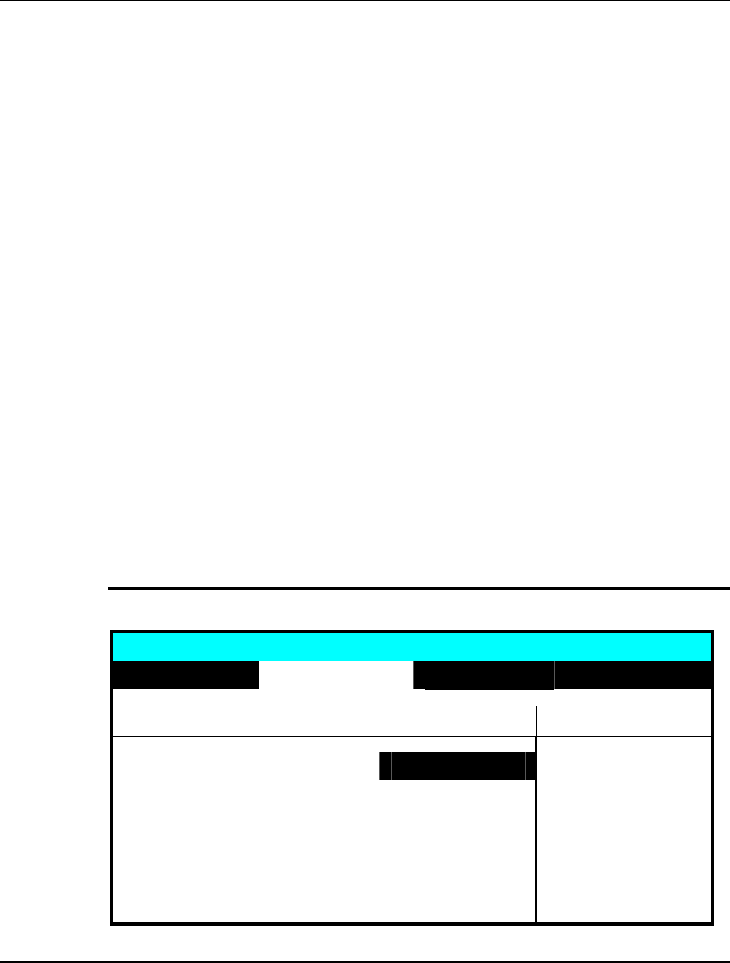
Notebook User Guide
106
• Advanced Chipset Control
Allows you to set or view the parameter of Chipset.
• I/O Device Configuration
Lets you configure input/output device such as Serial Port, Parallel Port.
• USB BIOS Legacy Support
Enable or disable support for USB floppy drive.
• PS/2 Mouse
[Disabled] prevents any installed PS/2 mouse from functioning. [Both]
activate both the glide pad and external PS/2 mouse. [Auto] will disable
the glide pad function if you had installed the external PS/2 mouse
• Summary Screen
Displays system configuration on boot.
• Silent Boot
Lets you specify the boot screen as Logo screen, POST screen by choosing
Enabled, Disabled respectively.
6.3.1 I/O ADVANCED CHIPSET CONTROL SUB-MENU
Phoenix BIOS Setup Utility
Main Advanced Security Boot Exit
Advanced Chipset Control Item Specific Help
Graphic Aperture [128 MB] Select the size of the
CPU Freq. Ratio 133 MHz graphics Aperture for
DRAM Freq. Ratio 166 MHz the AGP video device.
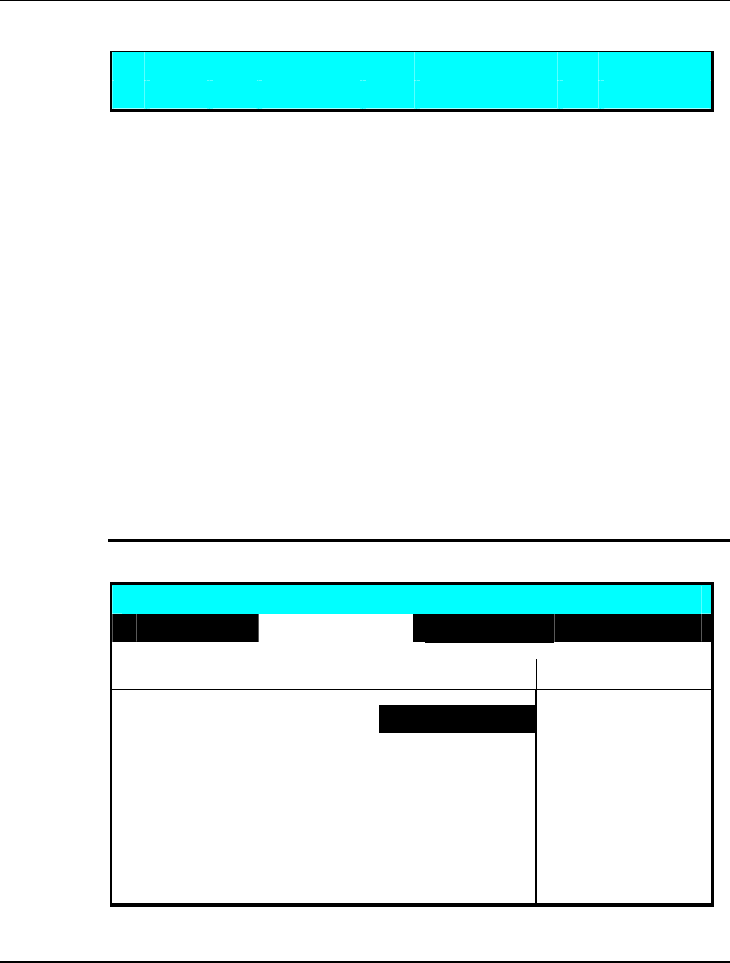
Customizing Your Notebook 6
107
F1 Help Ç ÈSelect Item -/+ Change Values F9 Setup Defaults
Esc Exit Å--> Select Menu Enter Select Sub-Menu F10 Save and Exit
• Graphic Aperture
Select the size of the graphics Aperture for the AGP video device.
• CPU Freq. Ratio
This field reports the base CPU Frequency Ratio detected by the BIOS
during Power-On Self-Test (POST). The real CPU Frequency Ratio is
equal to base CPU Frequency Ratio times certain value. So the value here
is not the real Frequency of your CPU.
• DRAM Freq. Ratio
This field reports the base DRAM Frequency Ratio detected by the BIOS
during Power-On Self-Test (POST). The real DRAM Frequency Ratio is
equal to base DRAM Frequency Ratio times certain value. So the value
here is not the real Frequency of your DRAM.
6.3.2 I/O DEVICE CONFIGURATION SUB-MENU
Phoenix BIOS Setup Utility
Main Advanced Security Boot Exit
I/O Device Configuration Item Specific Help
Infrared port: [Auto] Configure Infrared port
Parallel port: [Enabled] using options:
Mode: [EPP] [Disabled]
No configuration,
[Enabled]
User configuration,
[Auto]
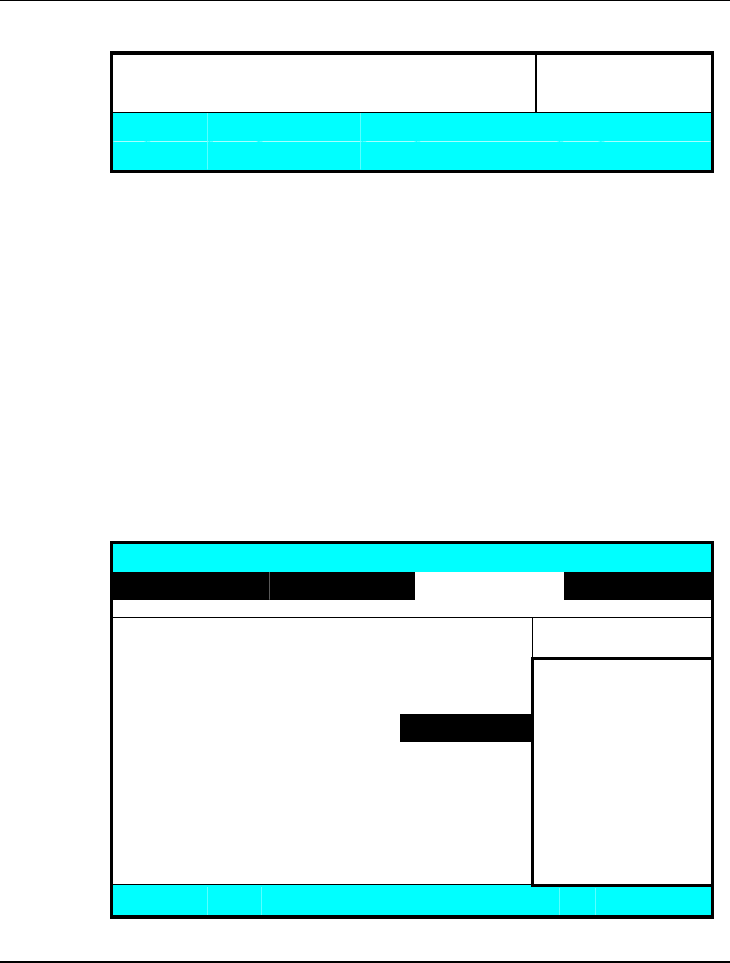
Notebook User Guide
108
BIOS or OS chooses
configuration,
F1 Help Ç ÈSelect Item -/+ Change Values F9 Setup Defaults
Esc Exit Å--> Select Menu Enter Select Sub-Menu F10 Save and Exit
• Infrared port
You can select the Enabled, Disabled, or Auto option for enabled or
disabled the port, or automatically sensed by BIOS or OS. If you select
Enable, you also need to set the IR mode, Base I/O for the IR device.
• Parallel port:
You can select the Enabled, Disabled, or Auto option for enabled or
disabled the port, or automatically sensed by BIOS or OS. If you select
Enable, you also need to set the Parallel port mode (EPP, ECP, Bi-
directional).
6.4 Security Menu Setup
Phoenix BIOS Setup Utility
Main Advanced Security Boot Exit
Item Specific Help
Su
p
ervisor Password Is Clea
r
Su
p
ervisor Password
User Password Is Clear controls access to the
Set Supervisor Password [Enter] setup utility.
Set User Password [Enter]
Password on boot [Disabled]
Fixed disk boot sector [Normal]
F1 Help Ç ÈSelect Item -/+ Change Values F9 Setup Defaults

Customizing Your Notebook 6
109
Esc Exit Å--> Select Menu Enter Select Sub-Menu F10 Save and Exit
• Supervisor Password Is
Set/Clear selections show that the notebook is under controlled by
Supervisor Password or not.
• User Password Is
Set/Clear selections show that the notebook is under controlled by User
Password or not.
• Set Supervisor Password
Supervisor password gives you the authority in accessing the setup utility.
You also need to enter this password in system booting and resuming
from suspend mode. When you press <Enter> in this field, the Set
Supervisor Password dialog box appears. Enter a new password with up to
8 alpha-numeric characters, and then re-enter it for confirmation.
• Set User Password
This field is only available when Supervisor Password has set. Enter the
user password when boot the system or resume from suspend mode. But
if the Write Protect is set in the Fixed disk boot sector field, you should
enter a supervisor password to access the fixed disk when boot the system
or resume from suspend mode.
• Password on Boot
If you set this field to Enabled, your computer will always ask for the
password every time you boot your computer.
• Fixed Disk Boot Sector
If you set this field to Write Protect, the write protect boot sector on hard
disk will protect against viruses. In this situation, only the supervisor can
access the Boot Sector of fixed disk.
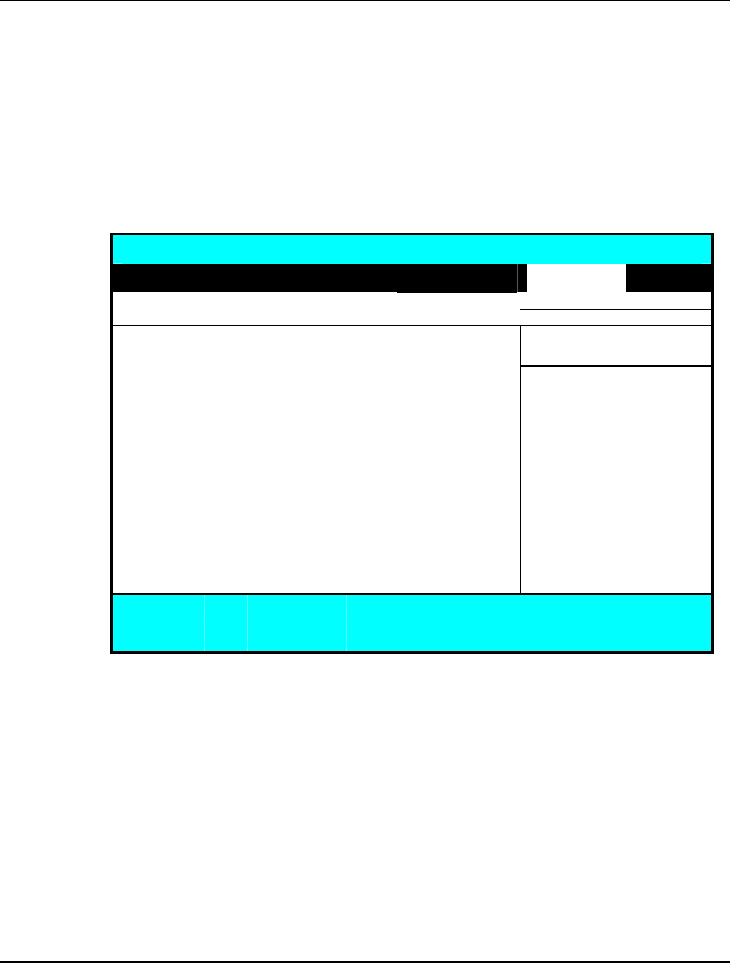
Notebook User Guide
110
6.5 Using the Boot Setup
This item allows you to set the search drive sequence where the system will try
to boot up first.
Phoenix BIOS Setup Utility
Main Advanced Security Boot Exit
Item Specific Help
+Removable Devices Use <Ç> or <È> to
+Hard Drive select a device, then
CD-ROM Drive press <+> to move it
up to the list, or <-> to
move it down to the
list. Press <ESC> to
exit from this menu.
F1 Help Ç ÈSelect Item -/+ Change Values F9 Setup Defaults
Esc Exit Å--> Select Menu Enter Select Sub-Menu F10 Save and Exit
To select the boot device, you can use the up or down arrow key, then press
<+> to move up the device in the list or press <-> to move down the device
in the list. To exit from this menu, press <Esc>.
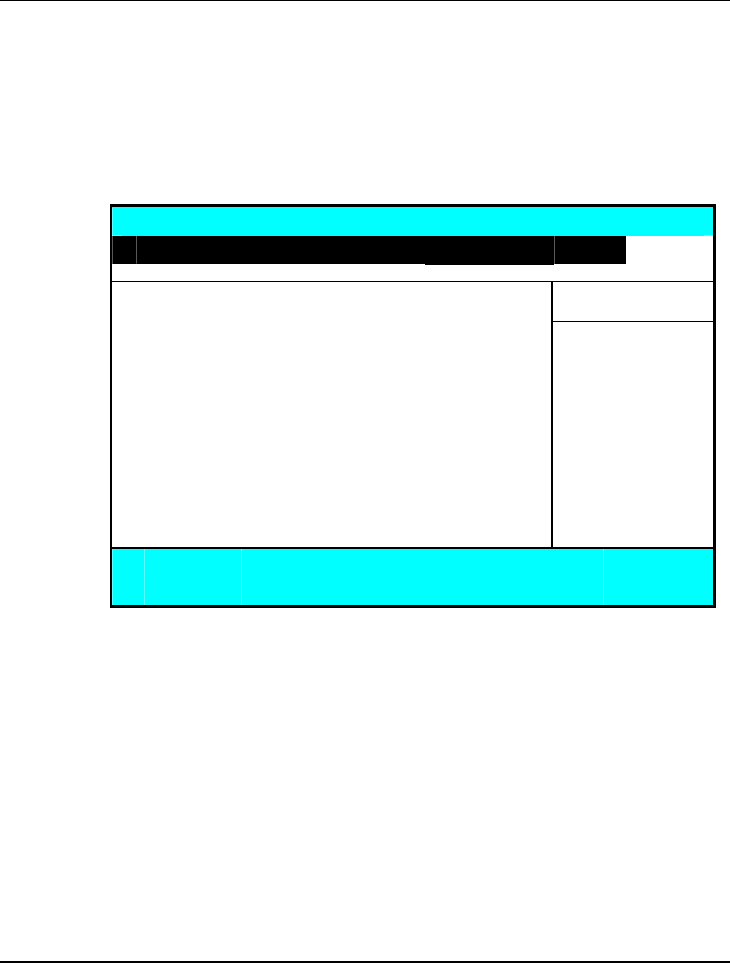
Customizing Your Notebook 6
111
6.6 How to Exit the Setup Program
There are two choices to escape from the Setup program.
Phoenix BIOS Setup Utility
Main Advanced Security Boot Exit
Item Specific Help
Exit Savin
g
Chan
g
es Exit S
y
stem Setu
p
Exit Discarding Changes and save your
Load Setup Defaults changes to CMOS.
Discard Changes
Save Changes
Battery Refresh
F1 Help Ç ÈSelect Item F5/F6 Change Values F9 Setup Defaults
Esc Exit Å--> Select Menu Enter Execute Command F10 Save and Exit
• Exit Saving Changes
Saves all changes to CMOS while running the BIOS setup program and
exit from the system setup program.
• Exit Discarding Changes
Allows you to discard all changes made while running the BIOS setup
program and exit from the system setup program.
• Load Setup Defaults
Lets you load the default values for all setup items.

Notebook User Guide
112
• Discard Changes
Reverts to previously selected settings.
• Save Changes
Saves Setup data to CMOS.
• Battery Refresh
Conditions the battery so that the battery can be fully charged.
6.7 How to Upgrade the BIOS
Your computer uses EPROM Flash BIOS chip that allows you to easily
upgrade the BIOS program. When you update the BIOS, any customized
settings you made are lost.
To upgrade the BIOS:
1. Insert the MS-DOS startup diskette with BIOS Update driver into the
USB diskette drive.
2. Power on the system with the diskette in the diskette drive.
3. On the DOS prompt, type the following command.
A:\>Phlash XXXXXX.ROM (BIOS filename) or
A:\>XXXXXX.BAT (Batch file for BIOS file)
4. Press <Enter> to run this BIOS utility. After the system has been
successfully run this program, a message similar to the following appears:
Flash memory has been successfully programmed,
press any key to restart the system. If the
system does not restart, turn it off, then turn
on again.
5. Press any key to restart this system.
Contact your dealer for the latest BIOS update file.

Customizing Your Notebook 6
113
It is necessary to prepare a USB Floppy Drive by yourself for BIOS upgrading.
If you don't have MS-DOS startup disk, please make one. Insert one diskette
into the floppy disk drive. Double click My Computer on the desktop. Click
the right button on the icon of 3 1/2 Floppy (A:), and then select Format
command. In the format windows, tick Create a MD-DOS startup disk and
then click Start bottom to create an MS-DOS startup diskette.
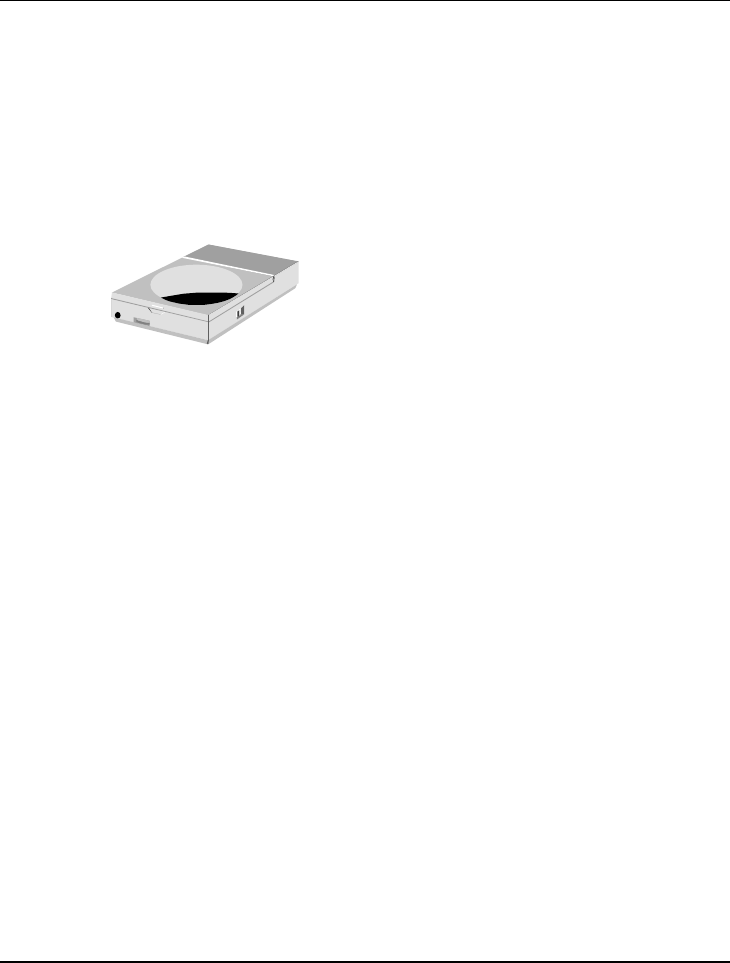
System Upgrade 7
115
7 System Upgrade
This chapter describes how to upgrade your
system. You can upgrade your memory size to your
system for specific requirements. This section
provides an easy step in doing system upgrade for
your notebook computer. The upgrade procedures
include the following.

Notebook User Guide
116
7.1 System Upgrade
This section provides an easy step in doing system upgrade for your notebook
computer. The upgrade procedures include the following:
MEMORY UPGRADE PROCEDURES
Your notebook computer offers two memory slots using 200-pin SODIMM
(Small Outline Dual Inline Memory Module) at least 128MB DDR SDRAM.
The memory compartment is located just under your computer.
Based Memory Installing Memory Total
128 MB 0 MB 128 MB
128 MB 128 MB 256 MB
128 MB 256 MB 384 MB
128 MB 512 MB 640 MB
256 MB 0 MB 256 MB
256 MB 128 MB 384 MB
256 MB 256 MB 512 MB
256 MB 512 MB 768 MB
512 MB 0 MB 512 MB
512 MB 128 MB 640 MB
512 MB 256 MB 768 MB
512 MB 512 MB 1024 MB
1024 MB 0 MB 1024 MB
1024 MB 128 MB 1152 MB
1024 MB 256 MB 1280 MB
1024 MB 512 MB 1536 MB
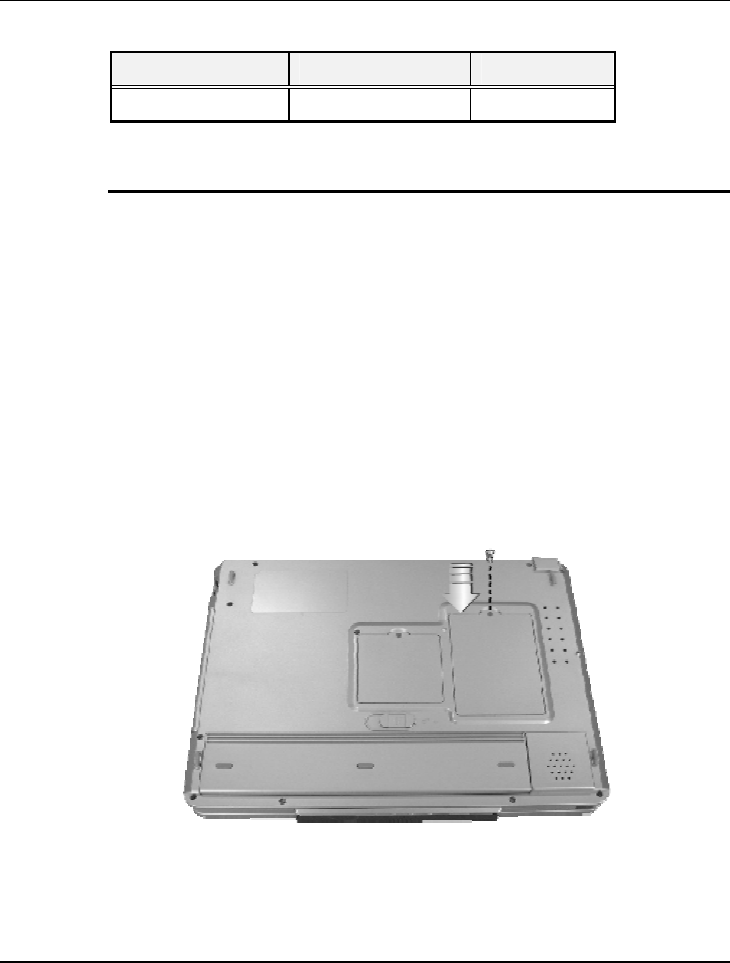
System Upgrade 7
117
Based Memory Installing Memory Total
1024 MB 1024 MB 2048 MB
INSTALLING MEMORY MODULE
Your computer comes with standard 128MB, 256 MB, 512MB or 1024MB of
synchronous DDR SDRAM. You can increase system memory to a maximum
of 2048 MB in the system, by installing two small outline double inline memory
modules (SO-DIMMs) with installed base memory in the system.
The 128MB, 256MB, 512MB and 1024MB memory modules are available:
To install the memory module:
1. Make sure the system is powered off, the battery also is removed and that
no peripheral devices are attached.
2. Turn the computer upside-down and locate the screw that secures the
DIMM door at the underside of the notebook.
3. Remove the screw and open the DIMM cover by your finger.

Notebook User Guide
118
4. Locate the memory module into the empty memory module sockets.
(Your system comes with one memory module already installed in the
socket.)
☞
Avoid touching the exposed components inside the system. Doing so may
damage the system.
5. Insert the connector of the memory module into the socket. Make sure the
notch of the memory module fits the nose of the socket.
y Hold the memory module at a 30-degree angle and push its
connector into the memory socket of the notebook.
y Press down on the edge of the memory module until the locking
tabs on both sides is locked.
6. Put the DIMM door back and secure the screw on the DIMM door.
7. Turn the system over.
To remove a memory module, push the locking tabs aside from the memory
module until the module pops up. Then, remove the memory module.
7.2 Wireless Module Installation
This computer uses mini-PCI wireless LAN module at the bottom of this
notebook for wireless connection.
☞
Please contact dealer for adding or changing this module. Any damage that
caused by inappropriately adding or changing this module will not be under
warranty

Caring for Your Notebook 8
119
8 Caring for Your
Notebook
Notebook computer is very convenience at
business, entertainment and many aspects in daily life.
Its probability provides you to use it at different
environment. Misuses the notebook computer may
cause damage, shorten computer's life, or even injure
human body. Here is the guideline to take care of your
notebook and to operate it safely.

Notebook User Guide
120
8.1 Important Safety Instructions
Portable computers take the most beating from end users. This section gives
you detailed information about how to maintain a safe working environment
while using the notebook computer. You can maintain its condition and
performance by following these guidelines. Please read it carefully to ensure
maximum safety.
• Before cleaning the notebook computer, make sure it is disconnected from
any external power supplies (i.e. AC adapter, car adapter and so on).
• When cleaning, do not use liquid or sprayed detergent for cleaning.
Instead, use moisture sheet or a cloth for cleaning.
• The socket-outlet shall be installed near the notebook computer and shall
be easily accessible.
• Please keep the notebook computer from humidity.
• Lay the notebook computer on a reliable surface when installing. A drop
or fall may cause injury.
• The openings on the enclosure are for air convection hence the notebook
computer can be protected from overheating. DO NOT COVER THE
OPENINGS.
• Be careful of using power supply. The notebook computer has specific
power requirements.
• Use only a power adapter approved for use with this notebook computer.
• The power adapter may have a 3 prong plug. This is an important safety
feature. A compatible outlet is required. If it is not available, find a
qualified electrician to install one.

Caring for Your Notebook 8
121
• While unplugging the power cord, disconnect it by the plug head, not by
its wire.
• Make sure the socket and any extension cords you may use can support
the total current load of all the connected devices.
• Though your AC adapter is suitable for universal international voltage, it
still requires a stable and continual power supply. Make sure the voltage of
the power source when connect the notebook computer to the power
outlet. If your are unsure of your local power specifications, consult your
dealer or local power company.
• Place the power cord in such a way that people can not step on it. Do not
place anything over the power cord.
• All cautions and warnings on the notebook computer should be noted.
• If the notebook computer is not in use for a long time, disconnect it from
mains to avoid possible damage by transient over-voltage.
• Never pour any liquid into openings as this may cause fire or electrical
shock. If you had pour liquid (water, coffee...) on the openings (keyboard,
for example), please process as following procedures.
➟ Disconnect the AC power and remove battery immediately without
shutting down the Windows system.
➟ Turn over the notebook upside-down to emit the liquid
➟ Contacts qualify service personnel to repair it.
➟ Do not try to power on the notebook unless you are sure that the
liquid does not penetrate into the electronic devices or the notebook
is dry completely (for liquid like water only). Power on the wet
notebook will cause serious damage on the computer.

Notebook User Guide
122
• Never open the body of notebook computer. For safety reason, the
notebook computer should only be opened by qualified service personnel.
• If one of the following situations arises, have the notebook computer
checked by service personnel:
➟ The power cord or plug is damaged.
➟ Liquid has penetrated into the notebook computer.
➟ The notebook computer has been exposed to moisture.
➟ The notebook computer has not worked well or you can not get it
work according to user’s manual.
➟ The notebook computer has dropped and damaged.
➟ The notebook computer has obvious sign of breakage.
• Do not leave this notebook computer in an environment unconditioned.
Storage temperature above 60ºC (140ºF) may damage the notebook
computer.
• An approved power cord has to be used for the notebook computer’s
power supply. For a rated current up to 6A and an equipment weight
more than 3 kg, a power cord not lighter than H05VV-F, 2G, 0.75mm2,
has to be used.
• To avoid any damage happened to the internal device, you should first
disconnect the AC adapter and remove the battery pack from the
notebook when replacing any internal device.
The sound pressure level at the operator's position according to IEC 60704-1 is
equal or less than 70dB(A).

Caring for Your Notebook 8
123
8.2 Cleaning Your Computer
When it is necessary to clean the plastic case and keyboard, use a soft, lint-free
cloth, slightly dampened with a mild detergent solution or use the contents of
any commercially available computer cleaning kit.
Never use alcohol, petroleum-based solvents, or harsh detergents to clean the
notebook. Also never spray any liquids directly on the computer case,
keyboard, or screen. If the liquid-crystal display (LCD) screen has become
smeared or dusty, clean the screen by first applying a mild glass cleaner to a
soft, clean, lint-free cloth, and gently wipe the glass. Never apply liquids directly
on the screen surface. Moreover, do not use paper towels to clean the display
screen. Paper can scratch the display screen matte.
8.3 Maintaining the LCD Quality
When it comes to screen problems, heat plays a big part. After a good working
session, the typical routine is to shut the machine and close the cover. But the
display surface - no matter what type it is - and the components inside the
computer radiates heat; when you close the cover, you trap the heat against the
screen. Leave the computer's cover open for about ten minutes while the heat
disperses. Make this a habit.
You should also enable the power management of your computer to turn off
the LCD power and display when the system is in inactivity for some time.
Adding screen savers is also acceptable.
Follow the safety guidelines mentioned earlier and how to clean your computer.

Notebook User Guide
124
8.4 Maintaining Your Hard Disk
Losing your data has the same consequences as a system break down. Users
must make it a habit of doing hard disk maintenance every week or so. Here is
some maintenance you could do:
• Always backup your data files from your hard disk.
• Install the virus detecting program to monitor virus that could tamper your
files.
• Use SCANDISK once in a while to correct any errors found in the
directory and File Allocation Table. This will also free up space from any
unused sectors.
• Never move or raise the computer while the hard disk is being accessed,
most especially don't jar the hard disk as this may cause a hard disk crash.
• Use hard disk maintenance programs like Disk Defragmenter of
Windows. These reorganize your hard disk by eliminating fragmentation
and improving your hard disk access time.
• Install a system password in your computer so others won't be able to use
the hard disk.
8.5 Battery Care Guidelines
The battery pack furnished with the computer requires reasonable care and
handling to ensure efficient operation and maximum life. There is a risk of fire
and chemical burn if the battery pack is handled improperly.
To ensure that the battery pack endures normal life cycle, always observe the
following precautions when handling the battery pack:

Caring for Your Notebook 8
125
• Handle batteries carefully. Do not try to disassemble, crush, puncture,
open, drop, mutilate, short external contacts, disposed of in water or fire,
or expose it to temperatures higher than 60 C.
• Recharge batteries only as described in this manual and only in ventilated
areas. Never use an external charger other than the one supplied with your
computer.
• Do not leave batteries in hot locations for more than a day or two.
• Do not leave your battery in your computer for longer than 1 month
without plugging in the power adapter.
• Do not leave battery in storage for more than 2 months without recharging
it to prevent over discharge. Over discharge will hurt the battery
• Dispose dead battery properly to protect the environment. The batteries
contain hazardous chemicals and should not be thrown out with
household or office trash.
• You should always discharge your battery before recharging it on either of
these two conditions: first, this is the first time you start to use your
battery; second, you had not charge the battery for more than 2 months.
To discharge the battery, please execute the "Battery Refresh" function in
the BIOS Setup Utility.
8.6 When You Travel
For safety and convenience when traveling, please follow these instructions:
• Backup all needed files on your hard disk before traveling.
• Recharge your battery overnight to ensure full battery power before you
leave.
• Don't forget to bring along the AC adapter and extra battery pack.

Notebook User Guide
126
• Try to bring backup software as well.
• Check the voltage rating and the outlet type of your destination. If the
power cord of the adapter is different, then you need to purchase a
suitable one. Consult your dealer.
• Carry your computer in its carrying case or in a briefcase. Never check-in
the computer as a luggage.
• Remember to apply those power saving features and techniques to save
battery power.
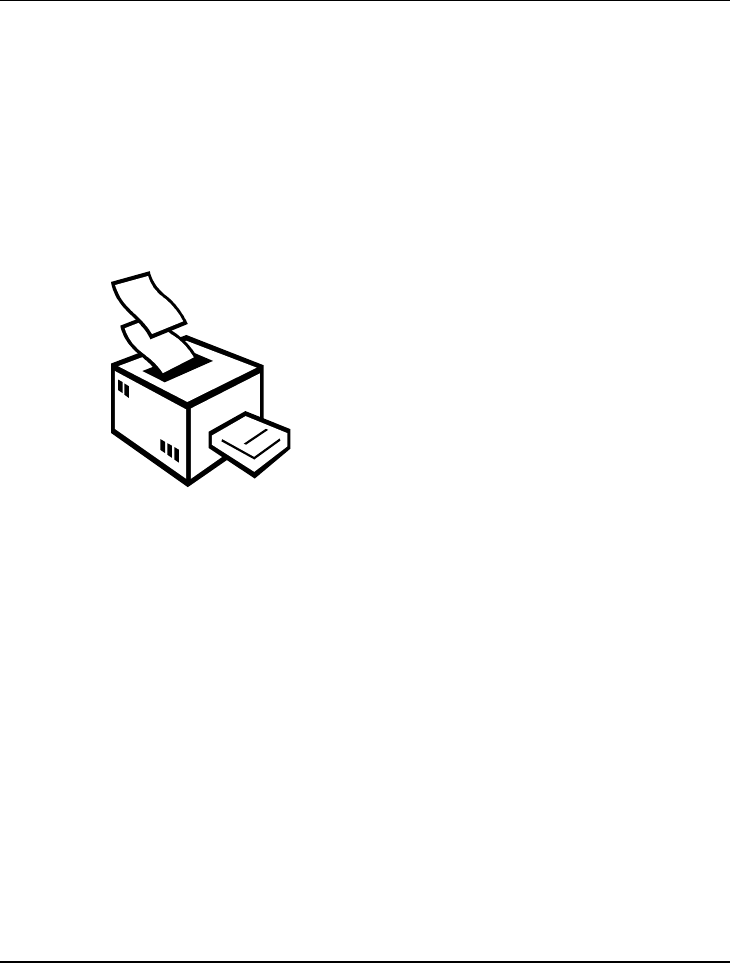
Hardware System Information A
127
APPENDIX A
Hardware System Information
This appendix gives information on the technical
and hardware specifications of your computer. Please
note that the information mentioned here may not be
exactly the same with your computer as specification
is subject to change without notice or modifying this
manual.
Designed with an advanced modular architecture,
your Notebook PC also allows you for several levels
of customization and expansion that are previously
available only on desktop PCs.

Notebook User Guide
128
System Specification
PROCESSOR UNIT
• AMD Socket A processor
• Up to 2600+ AMD Mobile AthlonXP CPU 266 MHz FSB
• 512KB integrated L2 cache
SYSTEM MEMORY
• Two 200-pin memory slots
• User-upgradeable to maximum 2048 MB using 200-pin SODIMM 256MB,
512MB and 1024MB module
• DDR 333/400 SDRAM modules
LCD DISPLAY
• 15.4” WXGA (1280x800) Color TFT LCD
• Maximum 16M true colors on all LCD display
VGA SYSTEM
• AGP Local Bus VGA Accelerator.
• Integrated ATI Mobility RADEON 9600 Pro graphic engine with
maximum 64MB video memory
• Simultaneous LCD and external monitor (CRT) display

Hardware System Information A
129
• Maximum 16 million colors on LCD display at 1280x800 resolution on
external monitor.
STORAGE
• 32-bit PCI Enhanced IDE interface with LBA mode
• 9.5mm height Ultra DMA 100/133 HDD
• Enhanced IDE bootable CD-ROM drive module
• Optional CD-RW/DVD combo drive that can be replaced with CD-ROM
• Optional DVD+RW combo drive that can be replaced with CD-ROM
• 4 in 1 (SD, MMC, SmartMedia, Memory Stick) card reader
• One U-disk socket for flash memory U-disk
AUDIO SYSTEM
• Full-duplex 16-bit stereo speakers with wavetable support
• H/W Audio Sound Blaster 16 compatible
• Built-in two speakers
• Stereo Line-In Jack for connecting an external audio device.
• Audio input jacks for microphone (MIC)
• Audio output jack for external speakers or headphone (Line-Out)
• Digitized audio SPDIF port for high quality signal transmission.
• Adjusting the volume manually by the thumb-wheel volume control
PCMCIA
• 32-bit CardBus PCI Local Bus PCMCIA controller

Notebook User Guide
130
• Supports 1 x Type II PC card
• Supports 32-bit Cardbus Cards, and 16-bit PC Cards
POINTING DEVICE
• Integrated Glide Pad pointing device with left, right and scroll buttons.
• RF wireless mouse with left, right buttons and scroll wheel.
KEYBOARD
• Full-sized 88 keys keyboard with Windows systems hot-keys, inverted T-
cursor keys, 5 hot keys, 12 function keys, embedded numeric keypad and
two easy buttons.
• Provides international language keyboard
FLASH BIOS
512K Flash ROM BIOS for easy BIOS upgrade
I/O PORTS
• 3 x Universal Serial Bus (USB 2.0) (1 set for U-Disk only)
• 1 x PS/2 port
• 1 x 15-pin VGA (Monitor)
• 1 x S-Video TV port
• 1 x IEEE 1394 port
• 1 x LAN port
• 1 x Modem port

Hardware System Information A
131
INFRARED PORT
1 x IR port
820.11b Wireless LAN (BTO)
AC/DC POWER SUPPLY ADAPTER
Universal auto-switching 90W (100V~240V) adapter
LSE0202A1990 power supply adapter
BATTERY
• Rechargeable 8 Cells Li-ion battery pack with Smart Battery function
• 2 hours of usage (when run ZD Battery Mark diagnostic program)
• 2 ~ 2.5 hours quick charge (computer turn off)
• M4 series Li-Ion battery pack
WEIGHT AND DIMENSION
• 357 mm x 255 mm x 28 (front) ~ 34 mm